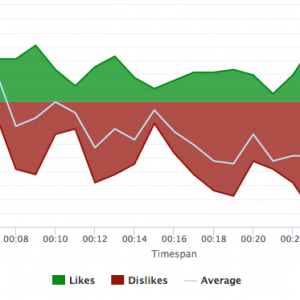Utilizing Content Marketing For Business Growth
Traditional marketing is losing effectiveness by the minute, and as a forward-thinking marketer, you know there has to be a better way. Content marketing is a strategic marketing technique that focuses on producing and delivering valuable, relevant, and consistent content to attract and maintain a specific audience and, eventually, drive profitable consumer action.
When you use content marketing, you deliver authentic, relevant, and valuable content to your prospects and customers. This way, you help them solve their problems, rather than promoting your products or services. Content marketing should be a part of your process, not something separate, regardless of the type of marketing methods you utilize.
In this blog, we are going to discuss some steps you can take to grow your business with the help of content marketing.
Steps to grow your business through content marketing
a. Set your mission and goals
Setting out a content marketing mission statement is an excellent place to start when planning your content strategy. This is a short statement that helps you focus on what’s important and what’s not when developing content, ensuring that your content marketing plan stays on track.
While your mission statement should focus on your audience’s gain from your content marketing approach, you should also consider what your company will get. This is where your company goals come into play.
b. Establish KPIs or key results
Making goals explicit and measurable is the greatest method to attain them. Setting key performance indicators (KPIs) for your content marketing plan is one way to do it. By offering milestones that you can check off, the KPIs will assist you in knowing when you’ve met your objectives.
These performance indicators cover revenue, sales, traffic, SEO, traffic, and various areas of digital marketing such as email marketing and social media data, among other things.
c. Understand your audience
You will need to know who your audience is to generate the right content to reach a successful content marketing campaign. There are three things you must do to achieve this. First, you must obtain demographic information about your website visitors, email subscribers, and social media followers. This is the best initial step to come up with excellent automated analysis.
Second, collect feedback from your present customers to learn even more about your target audience. Finally, personas for buyers should be created or fleshed out. Customer avatars, also known as buyer personas, represent your ideal readers and customers so you may better target content.
d. Assess your current situation
Many companies already have content online. This will include content from your blog and stuff from social media, podcasts, and videos, among other things. Because of this, the next stage is to determine whether the content is assisting you in achieving your objectives.
It would be best if you also considered how your content stacks up against that of your competitors and how any new content will fit into the market.
e. Know the best content channels for your business
You’ll get a feel of where your audience hangs out as you go through this process, as well as where you already have a significant online presence. Rather than trying to tackle everything at once, focus on what is working and develop from there.
You can quickly pick which networks to target to increase social media engagement and share your content with your information.
f. Know the types of content for your business
Next, consider the kind of material you’ll need to provide. Every content marketing strategy will incorporate specific categories of content. The majority of effective content marketing techniques rely on having a central core of information published on your site (or “home base”) that can then be repurposed and shared on other sites (outposts).
As a result, blog articles remain an essential aspect of your content marketing strategy, and they continue to produce excellent results. Your blog postings should ideally be helpful, valuable, and shareable, and they should cover various topics.
g. Plan and create a content calendar
You’ll need to know precisely when you want to post your material on each platform you wish to use as part of your content strategy. Because a lack of planning is a shared content marketing problem, using a content calendar to schedule all of your material is critical.
You may enter the due dates for each piece of material into Google Calendar. That works great, especially if you don’t have a lot of information to share. That’s the most basic way, but if you’re publishing a lot of content and need to manage a content team as well as the production pipeline you’ve chosen, you’ll probably need more functionality.
h. Start creating your content.
Finally, get to work on your content, whether it’s writing or developing it. You’ll need to consider how to express your brand’s personality in the material you create at this point. You may want to be highly formal, extremely informal, or somewhere in between. You’ll also have to strike a balance between demonstrating your knowledge and not highly patronizing your audience.
i. Launch your campaign
Distribution and marketing are the following vital aspects of your content strategy. In this launching phase, you must pay attention to doing it correctly. That’s because unless things are handled correctly, you won’t obtain the outcomes you want.
j. Measure and analyze your results
Finally, evaluate the effectiveness of your content marketing plan. To do so, go back to the KPIs you defined at the outset of the content strategy plan and assess what has changed and whether you are on track to meet your goals. You’ll be able to alter your content marketing plan at regular intervals by tracking your progress, ensuring it’s always up to date.
Final Thoughts
Content marketing outperforms traditional marketing approaches by a wide margin and generates much more website traffic and leads. Consistent content creation increases website traffic, and as traffic grows, so do conversions. A good conversion strategy will then generate high-quality leads.
We hope this guide helped you in integrating content marketing into your business. These will immensely help you in introducing your products and services more to your prospects.








